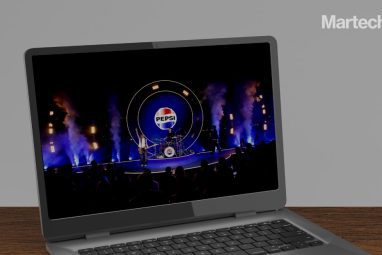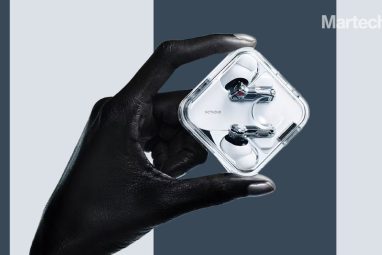The Role of AR In The Purchase Journey
AR technology has been exponentially leveraged across userbases, and industries. Where does AR fit in a marketer’s toolkit?
Topics

AR allows customers to try on make-up, see what new furniture looks like in their living room, and playfully interact with the brand. Can it be more for a marketer? While AR ads are fun, it can be more than fun, says a new study.
Snap Inc. and UM MENAT recently conducted research titled ‘The Augmented Reality Playbook: Understanding the Role of AR in the Purchase Journey’ to uncover the potentiality of AR ads (lenses) and to understand the role of AR ads in the consumer purchase journey.
Research findings shared that for those early in the purchase journey, AR ads capture consumers’ attention and for those in the consideration process, AR ads shape brand opinions in a positive light, while for those ready to make a purchase decision, AR ads are impactful throughout the branding funnel.
The research was gleaned from multiple brands representing different verticals, including Levi’s and The LEGO Group, and was conducted in five different markets including the US, Canada, Australia, Saudi Arabia, and France.
It considered different types of AR Lenses including Shoppable AR Lenses, Gamified Entertainment Lenses, Interactive Entertainment Lenses and tactics like World Facing Lenses, and Front Facing Lenses.
AR provides utility and informs above and beyond pre-roll ads. AR ads provide utility and help brands build deeper connections with consumers. Marketers leverage this to differentiate their brand when it matters most.
“I’d say with Web 3.0, the Metaverse, why is there wide speculation into the role of AR lenses, whether it’s a one-time trend or not? What we’ve seen is that it is here to stay and grow. Brands need to treat it as a full-funnel and immersive experience; Treat it like another brick and mortar that isn’t going anywhere. For me, the importance is dialling up consideration for a brand. The +6 per cent lift with the inclusion of AR lenses, shows there is a desire from the consumer to be communicated with differently.” said Nadeem Ibrahim, head of digital, UM Saudi Arabia.
The study showcased how the sequence of video and AR can play a crucial role in engagement. Tested within a multi-product campaign that started the sequence with a video ad and followed with interactive AR, showed amplified impact on traditional metrics.
“We have seen firsthand the value AR brings to the marketing mix, and specifically how Snapchat can contribute to full-funnel success, as we’ve been creating AR experiences for nearly a decade,” said Dave Roter, VP of global agency partnerships, Snap Inc.
“AR provides an immersive experience for our advertisers and these findings further demonstrate that AR offers a differentiated opportunity for brands to reach the right audiences, when it matters most, all while driving meaningful business for our customers.”
The key findings
- AR ads provide utility and help brands build deeper connections with consumers. Marketers should leverage this to differentiate their brand when it matters most.
Consumers found AR ads to be significantly more informative (+five per cent more than Pre-roll ads) and more useful (+six per cent) than traditional pre-roll ads. The study also uncovered that the various types of AR ads tested helped consumers feel closer to the brand (1.3x more than pre-roll) and got them excited about the brand (1.15x more than pre-roll). - While AR can shape how consumers feel about brands, marketers should use different AR formats to achieve their desired outcomes. Shoppable AR lenses trigger consumers at the end of their journey to take the next step, driving search intent (+eight per cent). Gamified entertainment AR lenses bring in a broader audience and differentiate consumers at the beginning of the purchase journey (+12 per cent) and lastly, Interactive entertainment AR lenses are found to boost memorability (+ nine per cent) and brand perception – people in the middle of the journey see the brand as more innovative (+nine per cent) and those, in the end, see it as unique (+eight per cent).
- AR should be strategically positioned in campaign sequencing as part of consumers’ exposure to the brand on the platform.
Brands benefit directly with higher purchase intent (+six per cent) and brand preference (+six per cent) when an AR ad is in the mix. Placing AR in the middle of a video, as the element of delight also helps build brand perception.
If you liked reading this, you might like our other stories
60% Customers Say Current Personalisation Has No Loyalty Impact
How are Leading Businesses Leveraging CDPs?






